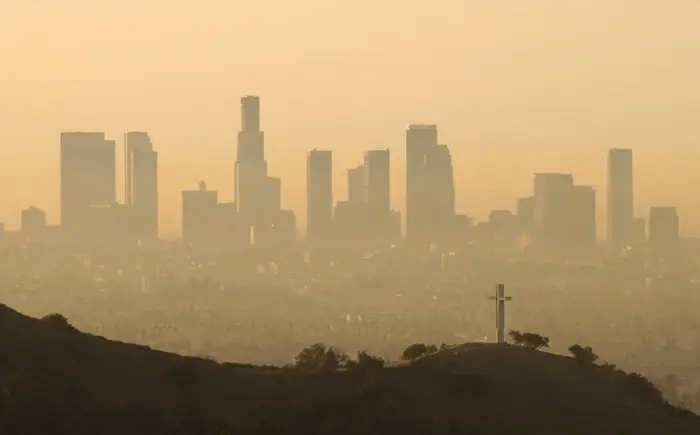In Short : “Warming up to climate change: How does climate change impact extreme weather events” suggests an exploration of the correlation between climate change and intensified or altered patterns of extreme weather events. This topic delves into the ways in which global warming influences the frequency, intensity, and distribution of extreme weather occurrences.
In Detail : In this series of explainers, we answer some of the most fundamental questions about climate change, the science behind it, and its impact. In the seventh instalment, we answer the question: ‘How does climate change impact extreme weather events?’
There is no dearth of reports highlighting the consequences of climate change, including droughts, water scarcity, severe wildfires, rising sea levels, etc. Despite that, there are many myths and a lot of confusion around the subject. In this series of explainers, we answer some of the most fundamental questions about climate change, the science behind it, and its impact.
In the seventh instalment (you can scroll down to the end of this article for the first six parts), we answer the question: ‘How does climate change impact extreme weather events?’
How does climate change impact extreme weather events?
The average global temperature on Earth has increased by at least 1.1 degree Celsius since 1850, primarily due to human activities that have released unprecedented levels of greenhouse gases into the atmosphere.
The spike in the temperatures has resulted in more frequent and more intense extreme weather events across the world. These events include heat waves, droughts, floods, hurricanes, and wildfires.
Notably, it’s quite difficult to attribute any particular extreme weather event to climate change. This is because there are multiple factors, like patterns of natural climate variability, such as El Niño and La Niña, that contribute to such events, according to Climate Change: Evidence and Causes, a jointly produced publication of The US National Academy of Sciences and The Royal Society.
“However, studies can show whether the warming climate made an event more severe or more likely to happen,” it added.
For instance, a study published after a 2019 heat wave that killed 2,500 people in Western Europe found that climate change made the heat five times more likely than in a world that hadn’t become so warm. In India, the duration of heat waves has increased by about 2.5 days between 1961 and 2021 due to global warming, according to a 2023 report by the India Meteorological Department.
Moreover, heat waves are expected to get worse in the following years. Climate models show that heat waves might become about 12 times more frequent by 2040s due to climate change.
Similarly, rising temperatures have worsened droughts. Take the example of what’s happening in some parts of East Africa. Between 2020 and 2022, the region witnessed five failed seasons, leading to its worst drought in at least 40 years. It displaced more than a million people and pushed millions more to the brink of famine. A 2023 report by World Weather Attribution (WWA) showed that climate change made a drought of such intensity at least 100 times more likely in the region.
Extreme heat also creates conditions more prone to wildfire and a longer wildfire season by evaporating more and more moisture from land. According to a different 2023 report by WWA, climate change more than doubled the likelihood of extreme “fire weather” conditions in Eastern Canada. The study came out at a time when Canada experienced the worst wildfire season on record last year, with 45 million acres burned.
Higher temperatures cause evaporation of water not only from land but also oceans and other water bodies, meaning a warmer atmosphere holds more moisture. Experts suggest for every 1 degree Celsius rise in average temperature, the atmosphere can hold about 7% more moisture. This makes storms more dangerous as it leads to an increase in precipitation intensity, duration and/or frequency, which ultimately can cause severe flooding.
“Warmer air can suck moisture out of the soil, amplifying droughts. On the flipside, warm air can also hold more moisture, meaning that it can transport more water into an already wet region,” a report by the Grist magazine noted.
There is a growing body of evidence that soaring temperatures are also making hurricanes stronger and more frequent. A 2023 study suggested that major hurricane landfalls in the eastern Pacific could become up to 30% more frequent in case global temperatures soar by at least 2 degree Celsius.
The rising surface temperatures of the oceans are the main reason behind such hurricanes.
The oceans have absorbed 90% of the additional heat generated by the greenhouse gas emissions in recent years. Due to this, global mean sea surface temperature has gone up by close to 0.9 degree Celsius since 1850 and around 0.6 degree Celsius over the last four decades.
Higher sea surface temperatures cause marine heat waves, an extreme weather event, which, in turn, makes storms like hurricanes and tropical cyclones more intense. Warmer temperatures escalate the rate of evaporation along with the transfer of heat from the oceans to the air. When storms travel across hot oceans, they gather more water vapour and heat. This results in stronger winds, heavier rainfall, and more flooding when storms reach the land.

